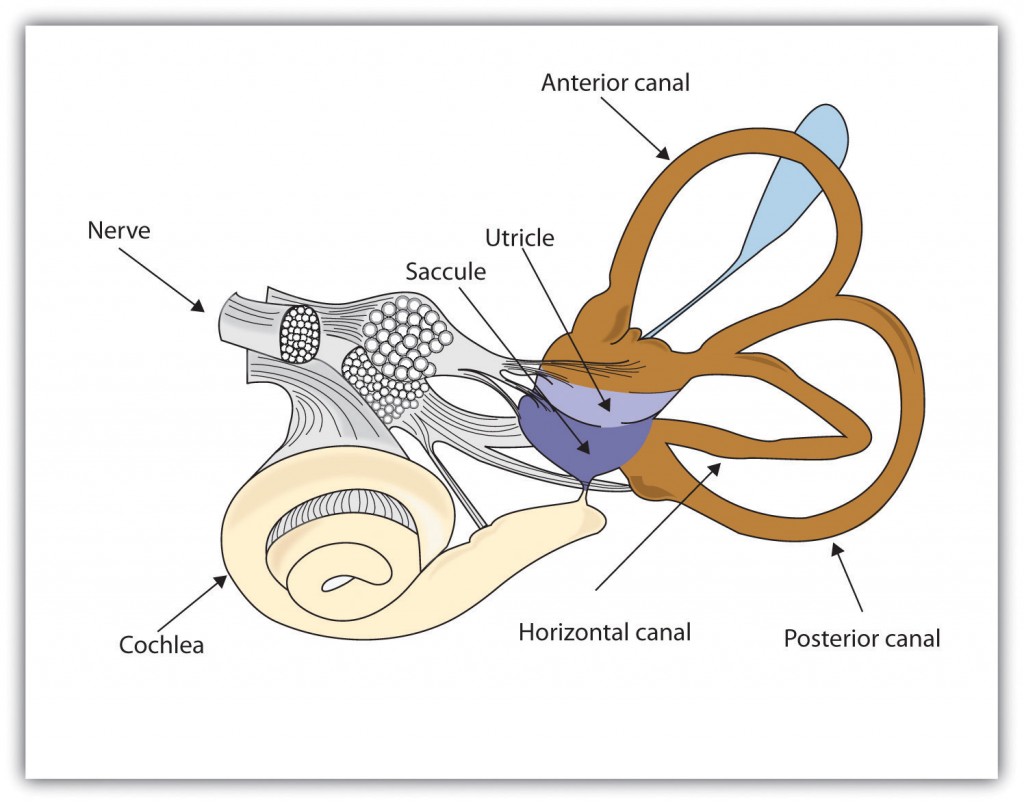Day 35
Learning Targets:
- Students will be able to describe the structure and function of the 5 basic senses and how these processes influence human behavior.
- Students will be able to understand the impact of perception on the influence of behavior.
Opener: How do we know where exactly our hands, feet, or any other part of the body are when we can't see it?
For example, if you were in a pitch black room, wouldn't you still know which foot is in front of the other? Couldn't you still clap your hands together?
Activity #1: The Skin Senses - Mini - Lecture

. One set of smaller nerve fibers carries pain from the body to the brain, whereas a second set of larger fibers is designed to stop or start (as a gate would) the flow of pain (Melzack & Wall, 1996). It is for this reason that massaging an area where you feel pain may help alleviate it — the massage activates the large nerve fibers that block the pain signals of the small nerve fibers (Wall, 2000).
For example, if you were in a pitch black room, wouldn't you still know which foot is in front of the other? Couldn't you still clap your hands together?
Activity #1: The Skin Senses - Mini - Lecture
- The skin, the largest organ in the body, is the sensory organ for touch. The skin contains a variety of nerve endings, combinations of which respond to particular types of pressures and temperatures.
- The thousands of nerve endings in the skin respond to four basic sensations — pressure, hot, cold, and pain — but only the sensation of pressure has its own specialized receptors.
- Other sensations are created by a combination of the other four. For instance:
- The experience of a tickle is caused by the stimulation of neighbouring pressure receptors.
- The experience of heat is caused by the stimulation of hot and cold receptors.
- The experience of itching is caused by repeated stimulation of pain receptors.
- The experience of wetness is caused by repeated stimulation of cold and pressure receptors.
- Proprioception — the ability to sense the position and movement of our body parts. Proprioception is accomplished by specialized neurons located in the skin, joints, bones, ears, and tendons, which send messages about the compression and the contraction of muscles throughout the body
- The ability to keep track of where the body is moving is also provided by the vestibular system, a set of liquid-filled areas in the inner ear that monitors the head’s position and movement, maintaining the body’s balance.

The Vestibular System. The vestibular system includes the semicircular canals (brown) that transduce the rotational movements of the body, and the vestibular sacs (blue) that sense linear accelerations.
- We do not enjoy it, but the experience of pain is how the body informs us that we are in danger. The burn when we touch a hot radiator and the sharp stab when we step on a nail lead us to change our behavior, preventing further damage to our bodies.
- The gate control theory of pain;">proposes that pain is determined by the operation of two types of nerve fibers in the spinal cord
- Just like other senses, we are less aware of pain when we are focused on other stimuli around us.
* Remember all of the ways in which we can alter our consciousness? Choose two ways in which we can alter our consciousness and describe how you think this might allow us to perceive less pain than normal following an injury.
Need an example? https://www.psychologytoday.com/us/blog/the-athletes-way/201511/the-neuroscience-mindfulness-meditation-and-pain-relief
Close: Live Q&A Here:
No comments:
Post a Comment